January 15, 2022 | Jaci Conry
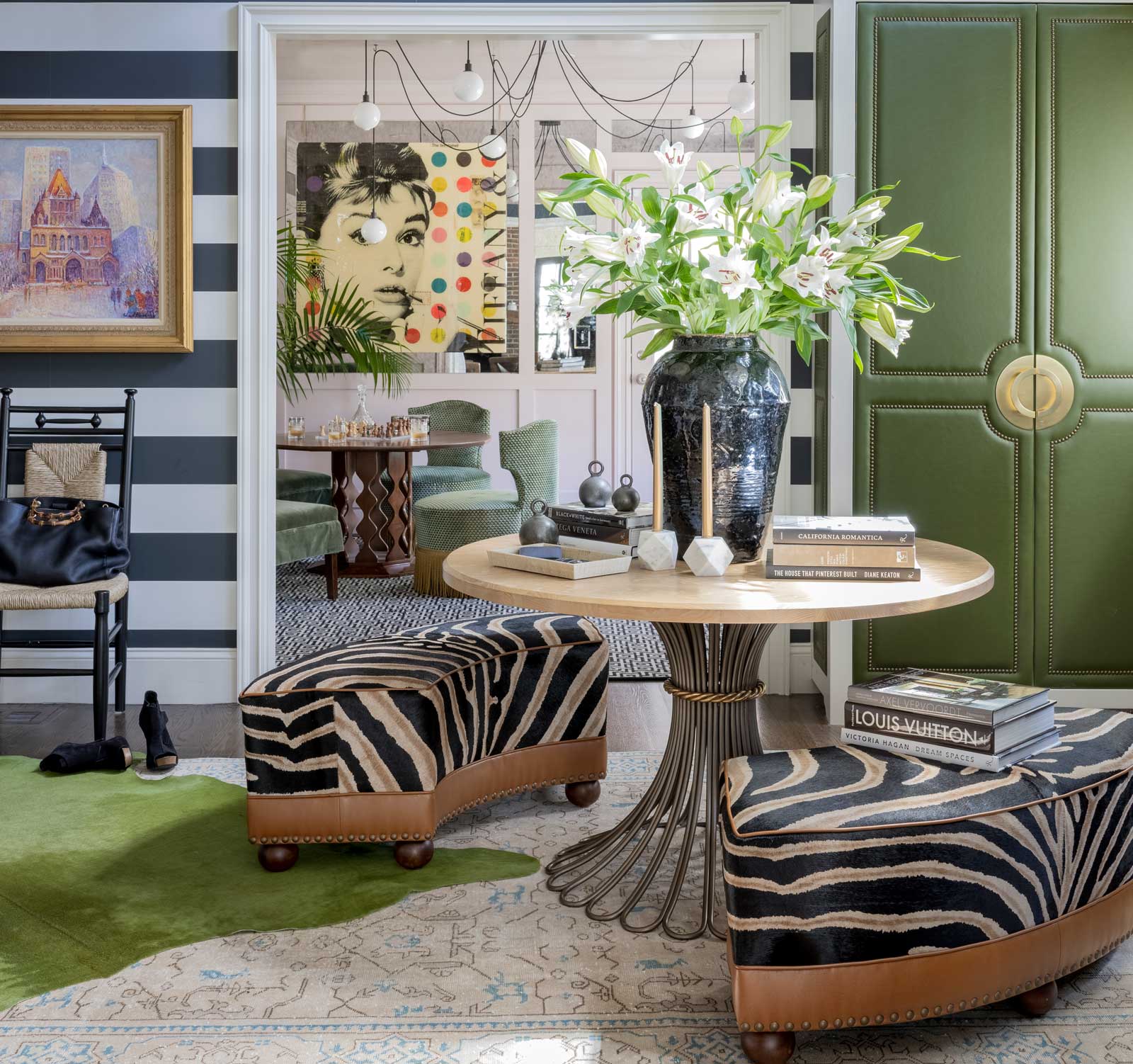
Robin Gannon poises a 1920s home for its next century by using daring elements, creative millwork, and strong textural notes.
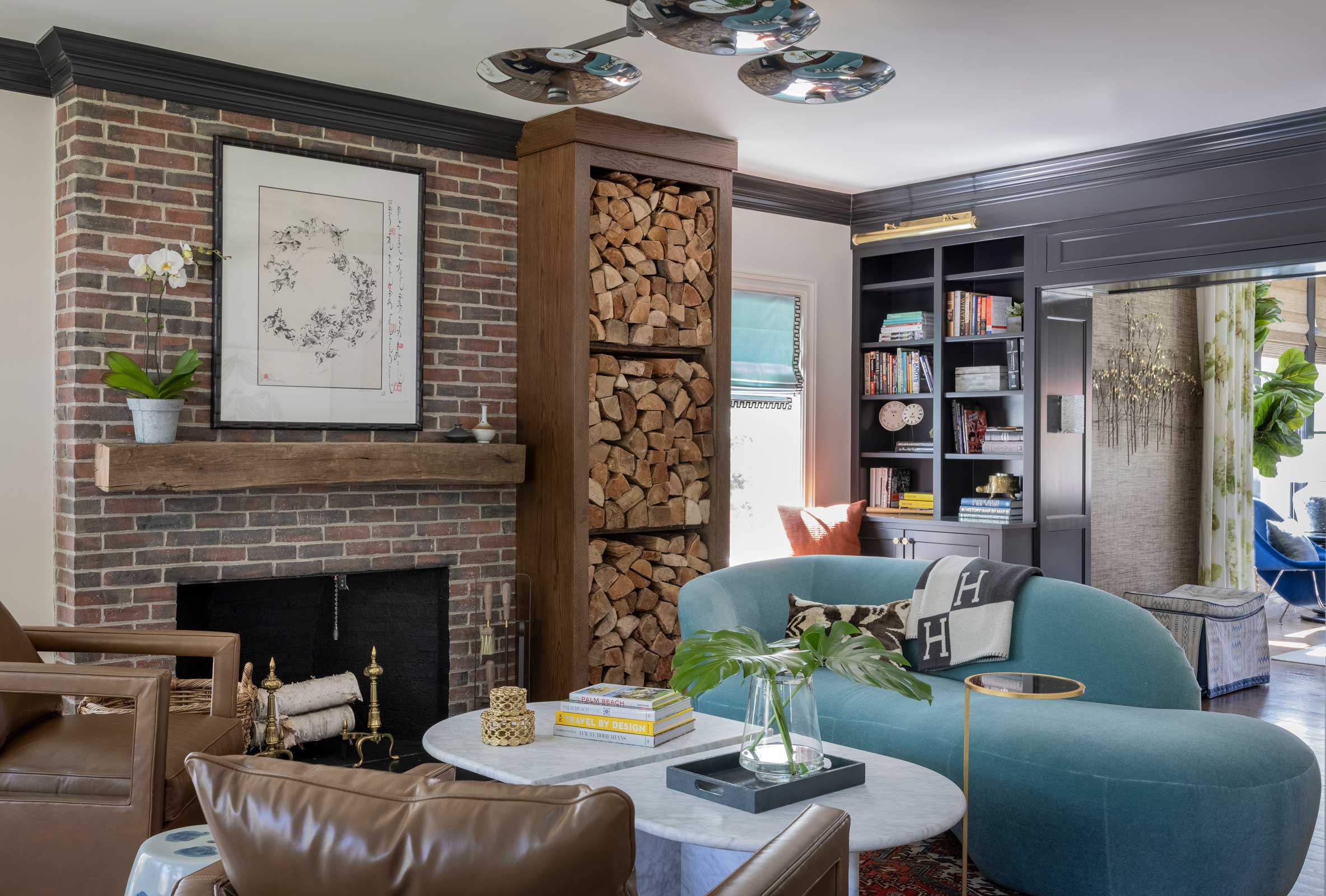
Gannon’s approach was to create a vibe that was youthful and sophisticated, much like the homeowners themselves, with layers of texture and pattern: a delightful mélange that includes art, high gloss paint, and statement light fixtures in key places.
The tone of the house is apparent as soon as one enters the front foyer. “You can tell right away that this is going to be a really fun, playful sort of home and that these are cool people,” she says. A black and white striped wallcovering by Schumacher covers the walls of the double-height space, while a green animal hide is layered over a vintage patterned rug. Two benches upholstered in a zebra motif trimmed with leather flank a pedestal table. “We needed seats for people to sit when they take off their shoes,” says Gannon. “But we definitely didn’t want to go with a typical wood bench.”
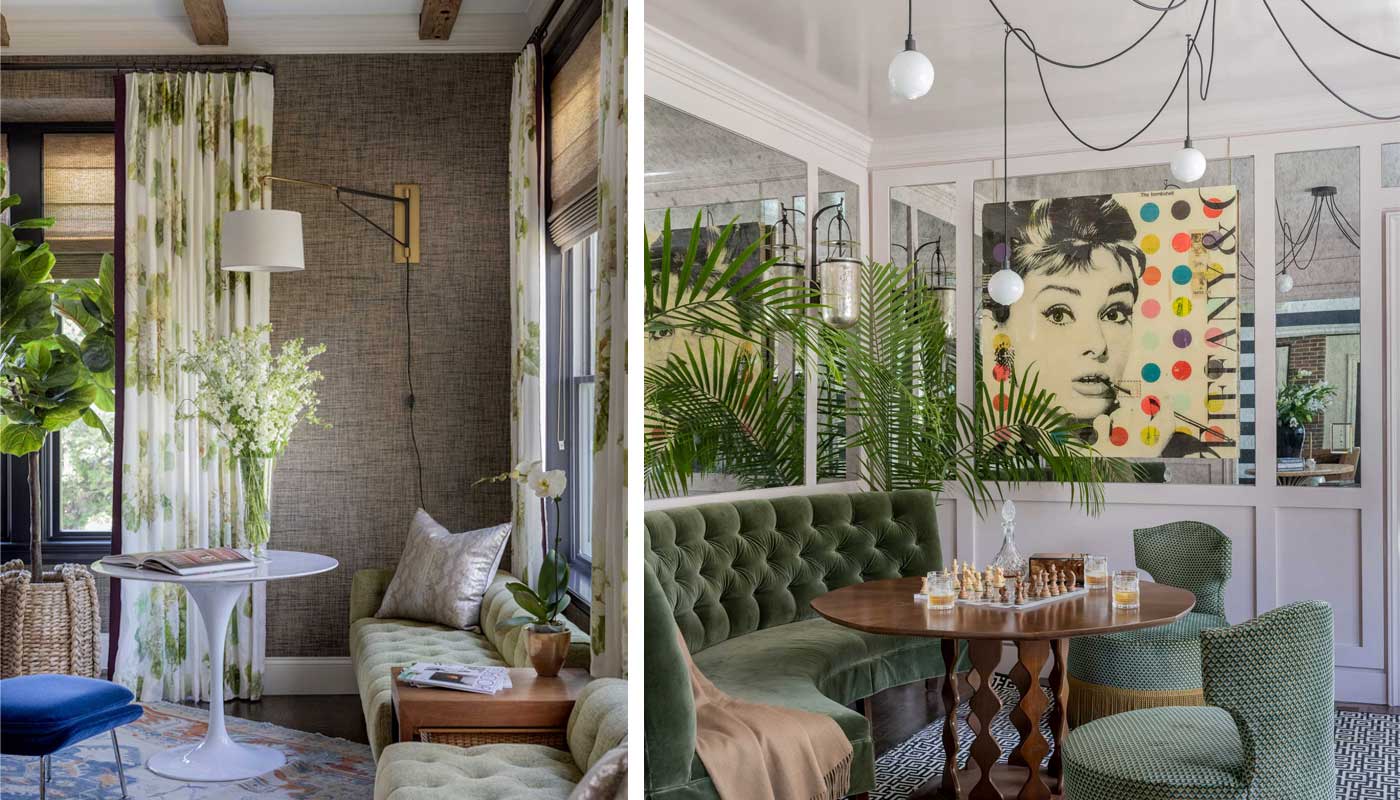
From the foyer, one catches a glimpse of the Audrey Hepburn pop art on the wall of the adjacent dining room. But it’s no longer a dining room, explains Gannon, “it’s now considered a lounge. They homeowners didn’t want a formal dining room in favor of a swanky lounge place where they could have friends over for cocktails and play poker.” Antique mirrored glass is inset into the wood paneled walls and a vintage game table paired with a curved green velvet banquette and swanky armless upholstered chairs festooned with fringe create a mood evocative of the 1920s flapper era, which is also when the house was built.
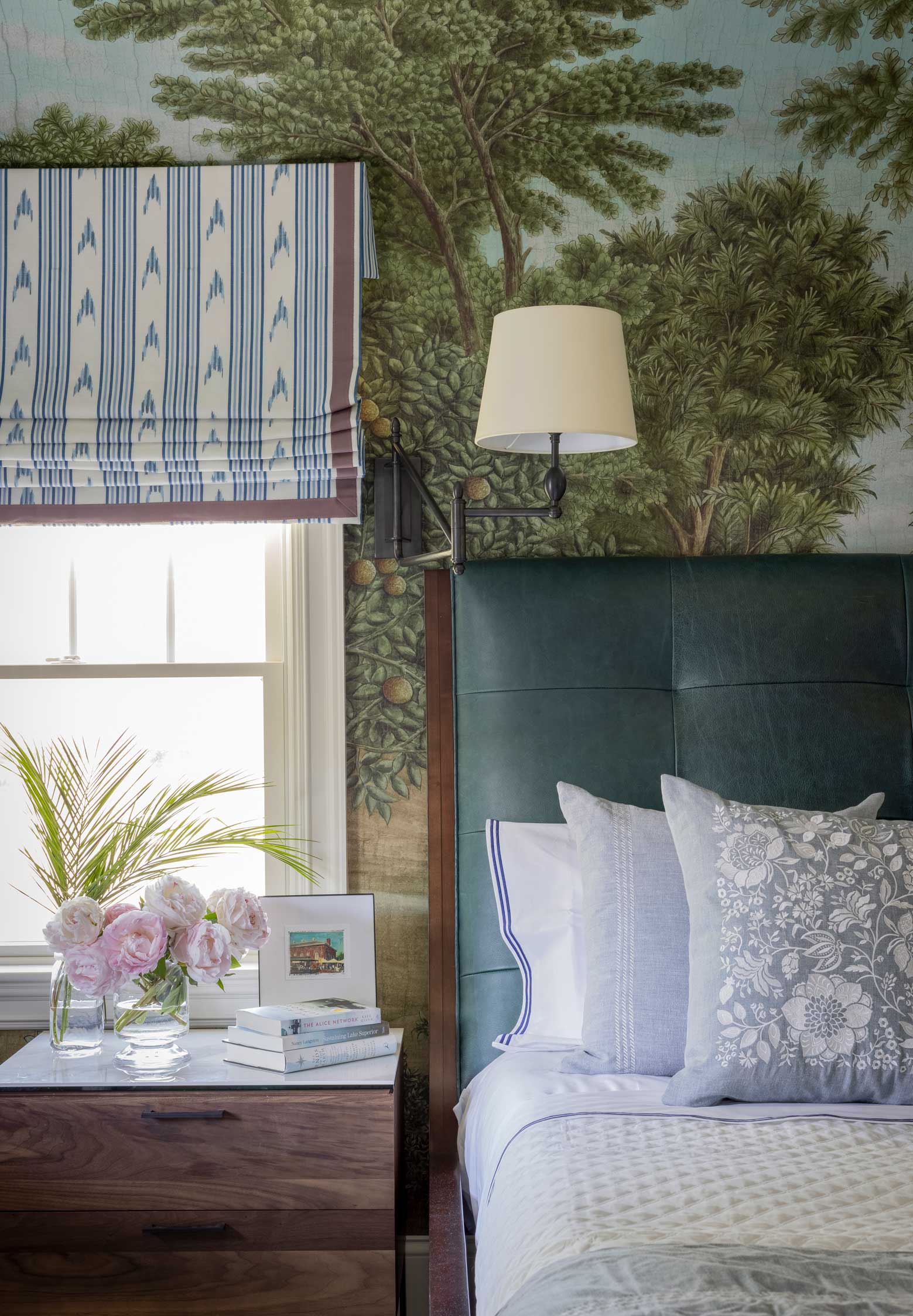
“Matching is a four-letter word to me, saying things don’t match is the biggest compliment you can give me,” says Gannon. “I feel it’s all about how you layer elements so they feel connected, but distinguished.”
Gannon opts to mix finishes, woods, and metals in most of the spaces she designs. In the living room, she notes the Arteriors chandelier comprised of mirrored silver discs. Brass is incorporated elsewhere in the room, including in the library lights above the built-in bookshelves. “Could we have found a brass chandelier for the room? Yes, but the silver one is more visually appealing, and the juxtaposition of the different metals gives your eye reason to travel around the room,” she says.
At the back of the house, the family room was long and large, with two walls of windows. “Because it’s so big and open, we needed to give the space a lot of texture and warmth. The ceiling was a vast stretch of plaster that stuck out like a sore thumb,” says Gannon whose solution was to add reclaimed wood beams to it to bring down the scale.
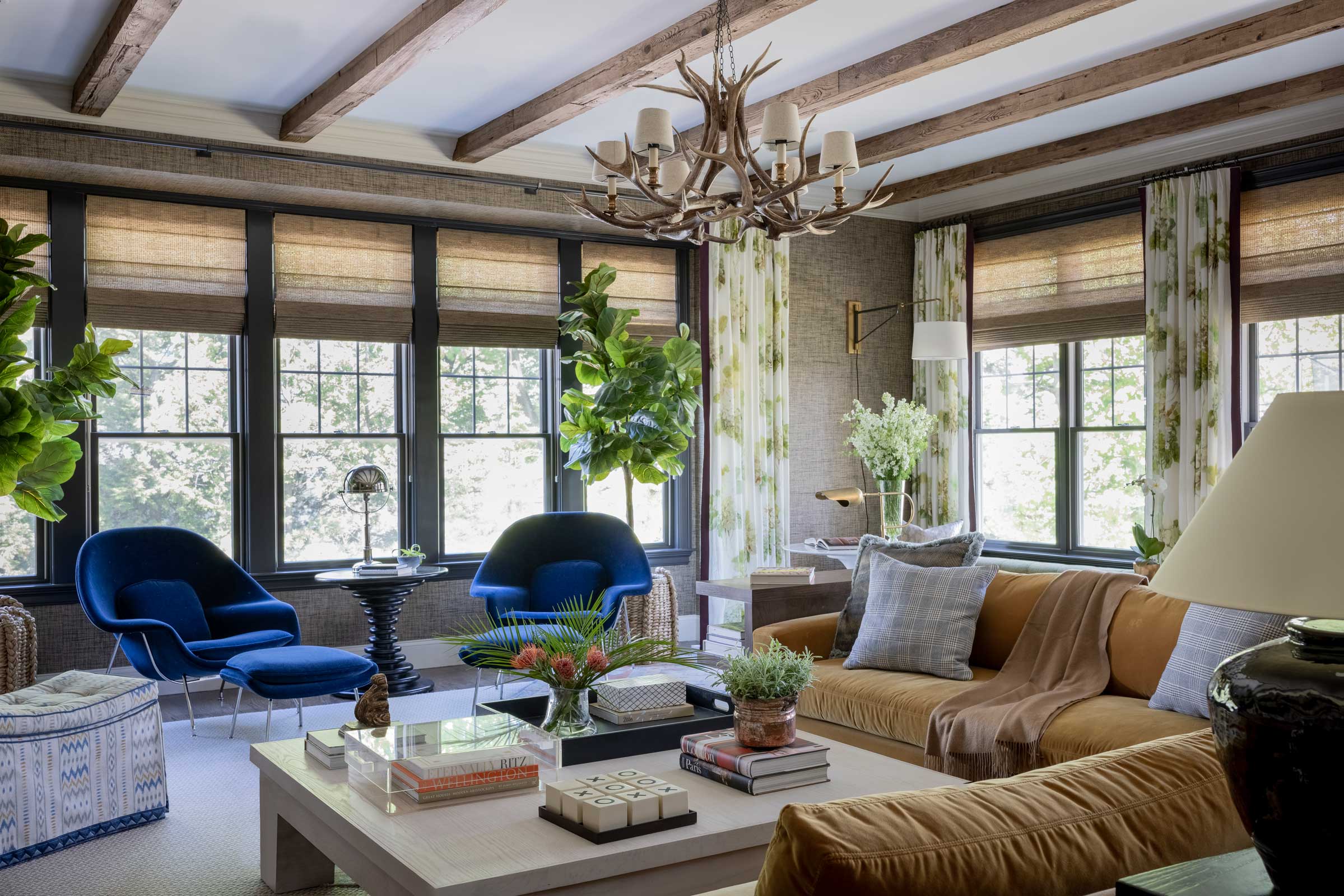
Three different seating areas were also created along with a continuous window seat that runs the length of the room. The trim and millwork are painted black to recede into the walls, which are sheathed in a darker toned Phillip Jeffries grasscloth. “If we painted the woodwork white it would have just stuck out too much,” says Gannon. Drapes in an Osborne & Little hydrangea motif infuse a vivid splash of green, which connects to the other variations of the hue throughout the house, including in the master bedroom, where the bed is upholstered in forest green leather.
“I strive to make rooms cohesive and connected in an interesting way,” says Gannon. “The similarities can be very subtle, just a shade or tint of a color, but it’s there if you look.”


Add new comment